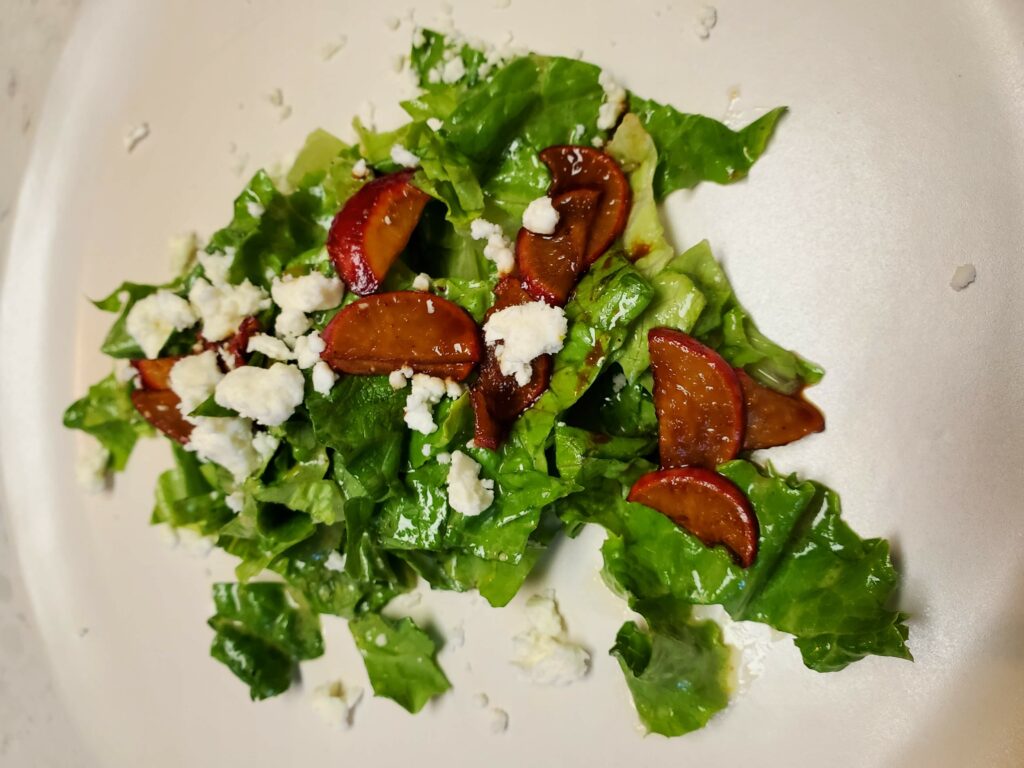Leafy Greens Lead Growing Season
go.ncsu.edu/readext?932369
en Español / em Português
El inglés es el idioma de control de esta página. En la medida en que haya algún conflicto entre la traducción al inglés y la traducción, el inglés prevalece.
Al hacer clic en el enlace de traducción se activa un servicio de traducción gratuito para convertir la página al español. Al igual que con cualquier traducción por Internet, la conversión no es sensible al contexto y puede que no traduzca el texto en su significado original. NC State Extension no garantiza la exactitud del texto traducido. Por favor, tenga en cuenta que algunas aplicaciones y/o servicios pueden no funcionar como se espera cuando se traducen.
Português
Inglês é o idioma de controle desta página. Na medida que haja algum conflito entre o texto original em Inglês e a tradução, o Inglês prevalece.
Ao clicar no link de tradução, um serviço gratuito de tradução será ativado para converter a página para o Português. Como em qualquer tradução pela internet, a conversão não é sensivel ao contexto e pode não ocorrer a tradução para o significado orginal. O serviço de Extensão da Carolina do Norte (NC State Extension) não garante a exatidão do texto traduzido. Por favor, observe que algumas funções ou serviços podem não funcionar como esperado após a tradução.
English
English is the controlling language of this page. To the extent there is any conflict between the English text and the translation, English controls.
Clicking on the translation link activates a free translation service to convert the page to Spanish. As with any Internet translation, the conversion is not context-sensitive and may not translate the text to its original meaning. NC State Extension does not guarantee the accuracy of the translated text. Please note that some applications and/or services may not function as expected when translated.
Collapse ▲The light green foliage of spring brings more than peace of mind. Leafy greens are one of the first fresh vegetables of the growing season. According to the USDA, over 11 pounds of lettuce is available for each person to eat every year. Most types of lettuce are a great source of vitamins K and A. Except for the iceberg variety, it’s also a good source of folate and iron.
While adding leafy greens to your menu can improve the quality of your diet, undressed lettuce isn’t very satisfying. Homemade vinaigrette dressing can transform lettuce into a side dish or meal that you crave.
The standard ratio of oil to vinegar or citrus in a basic vinaigrette is 3 parts oil to 1 part vinegar. Different acids and oils have varying effects on the balance. In general, less oil makes the dressing taste more acidic while more oil makes it milder. If you seek a mild flavor, try canola, safflower or soybean oils. Use extra virgin olive oil for that distinctive fruity flavor. Or walnut oil for a nutty flavor.
There are several types of commonly used vinegars. Cider vinegar comes from apples and has a slightly sweet apple taste. White or distilled vinegar comes from grain alcohol and purified so it has a neutral taste. Wine vinegars have a winey flavor. Balsamic vinegar is a special wine vinegar that is aged in oak barrels and has a sweet taste. Use lemons, limes or oranges as the acid when you want citrus flavor.
Salt and sweet ingredients may be added to enhance flavor and balance acidity.
This spring salad uses a fresh lemon vinaigrette on the lettuce and a sweeter balsamic glaze on the spicy radishes. The feta provides the salt dimension to balance it all out.

Lemony Spring Salad with Feta
Lemony Spring Salad topped with Feta and Balsamic Glazed Radishes
- 4 cups coarsely chopped salad greens
- 3/4 cup thinly sliced radishes
- feta cheese as topping
Balsamic glaze for radishes
- 1/4 cup balsamic vinegar
- 1 ½ tablespoon maple syrup or honey
- 1 teaspoon smoked paprika
Place ingredients in a small pan over medium heat. Once it begins to bubble, reduce heat to low and allow to simmer until reduced by half. Let cool, then toss with sliced radishes.
Lemon Vinaigrette Dressing
- 2 tablespoons lemon juice
- 1/2 teaspoon finely grated lemon zest
- 1 teaspoon mayonnaise
- 1 teaspoon Dijon or brown mustard
- 1/4 teaspoon salt
- Ground pepper
- 1/4 teaspoon sugar
- 6 tablespoons (3 ounces) extra-virgin olive oil
Combine all ingredient except olive oil in a bowl and whisk together. Add olive oil in a slow stream, whisking constantly.
Toss greens with dressing right before serving. Top each salad with balsamic glazed radishes and feta cheese. Serves 4
Margie Mansure is an extension agent with N.C. Cooperative Extension. As a registered dietitian/nutritionist chef, she offers nutrition and cooking classes to community members. margie_mansure@ncsu.edu




